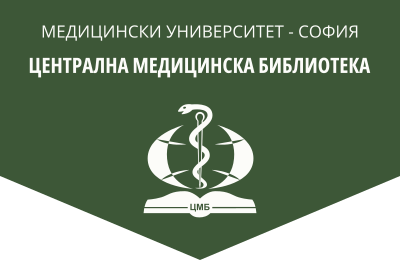Treatment of patients with colonic diverticulitis complicated with abscessh
Bulgarian Medical Journal, 2025, 19(1), 35-41.
H. Nikov, P. Chernopolsky
Second Department of Surgery, University Hospital „Sv. Marina“ – Varna, Department of Surgical Diseases, Medical University – Varna
Abstract. Introduction: Diverticulitis of the colon is common, especially among elderly patients, with an incidence of about 65% in the population over 65 years of age. Over the past two decades, there has been an increasing trend of diverticulitis cases in patients under 50 years of age. Complicated forms of diverticulitis may present with phlegmon, formed abscess, fi stula, intestinal obstruction or perforation. Only 5% of patients develop symptoms of diverticulitis. Most inflammatory episodes are uncomplicated, but 15-20% of cases are complicated by a formed abscess confi rmed by imaging – computed tomography. Objective: To present our clinical experience in the diagnosis and treatment of patients with abscesses due to diverticulitis in order to optimize treatment, reduce complications, mortality, re-hospitalizations and achieve a better quality of life. Materials and Methods: For the period of 2013-2023, 31 patients with diverticulitis complicated with abscess were admitted to the Second Department of Surgery, St. Marina Hospital. 14 of them were men and 17 women aged 43 to 82 years. The shortest hospital stay was 4 days and the longest – 17 days. The average hospital stay was 10 days. The therapeutic algorithm applied included “source control”, eff ective antimicrobial therapy, and measures to restore homeostasis of the organism. Source control is achieved by surgical treatment, minimally invasive treatment with percutaneous drainage under imaging control, or entirely conservative treatment. All patients were prescribed empirical antibiotic therapy with 2nd and 3rd generation cephalosporins, penicillins (Piperacillin/Tazobactam), carbapenems, fl uoroquinolones in combination with Metronidazole with a mean duration of treatment of 7 days. Results: A surgical approach to source control was initially applied to 15 patients, those classifi ed by Hinchey as stages IIA and IIB. Hartmann resection was performed in 14 of the patients. Right hemicolectomy was performed in 1 case, a patient with diverticulitis and an abscess in the area of the hepatic flexure. Percutaneous drainage under image guidance was performed in 12 cases with daily lavage and in some cases with active aspiration by creating negative pressure. Nine of these patients were classifi ed as Hinchey IB and 3 as Hinchey IIA. In 4 cases, control was achieved entirely conservatively by empiric antimicrobial therapy. In all patients in this group, the abscess was pericolic and limited in size to 2.5-3 cm. In 5 cases of patients initially treated with percutaneous drainage, additional surgical control had to be applied subsequently because of a progressive clinical picture of peritonitis. In 4 of these, this occurred during the hospital stay, and in 1, rehospitalization was recorded. In all these cases, resection was performed according to the Hartmann method. Fatal outcome was recorded in two operated patients, an 82-year-old woman and a 76-year-old man with multiple comorbidities. The patients were followed up one month after dehospitalization. One case of rehospitalization was recorded, a woman with Hinchey IIA abscess initially treated with percutaneous drainage under imaging guidance. Conclusion: Although a consensus exists for very mild and very severe forms of diverticulitis, treatment of cases with moderate severity is often not evidence-based but relies on intuitive judgment and subjective recommendations. The recurrence rate of complicated diverticulitis with abscess requires clearer assessment to better guide treatment. Although the available data in the literature are limited, they do suggest that complicated diverticulitis with abscess is associated with a high likelihood of surgical treatment, whereas a conservative approach may result in chronic or recurrent symptoms of diverticulitis.
Key words: complicated diverticulitis, abscess, source control, percutaneous drainage
Address for correspondence: Assoc. Prof. P. Chernopolsky, DSc, Second Department of Surgery, University Hospital „Sv. Marina”, 1 Hr. Smirnenski Blvd., Varna, e-mail: pchernopolsky@gmail.com
